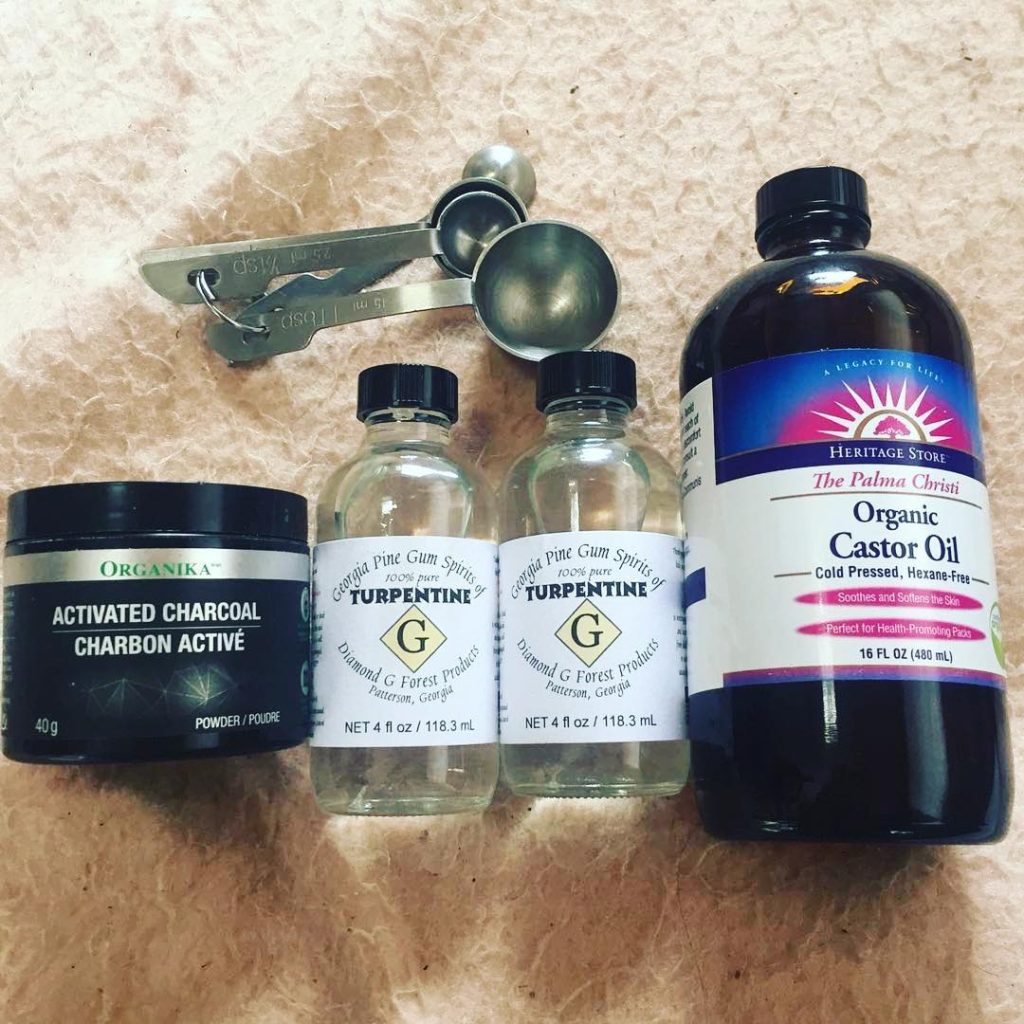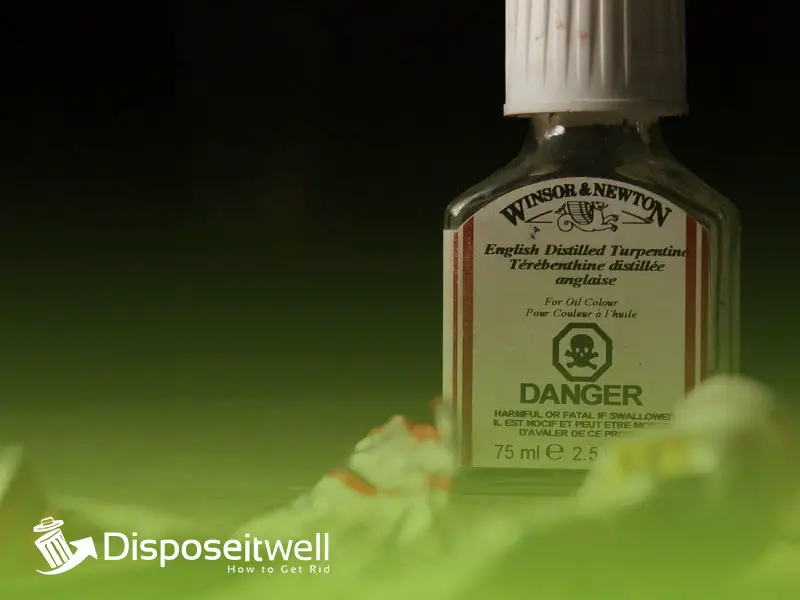Have you ever been working on a project only to find yourself faced with the daunting task of disposing of turpentine? You may be wondering how to safely dispose of this potentially hazardous material and what the best options are for you.
Turpentine is a powerful and versatile substance that has been used in various trades for centuries. It is a colorless, highly flammable liquid distilled from tree resin and has a variety of uses, ranging from solvents for paints and varnishes to medicinal applications.
In this blog post, we will explore the different ways you can dispose of turpentine, along with the potential risks involved. We’ll also discuss the importance of proper safety precautions when disposing of turpentine and why it’s important to be mindful of the environment when doing so.
Uses of Turpentine

Turpentine is not just a household product used for cleaning and maintenance, but is also a highly versatile and powerful ingredient used in a range of industries. Here, we take a look at some of the uses of turpentine, from flavoring food and beverages to being used as a cosmetics solvent and detergent solvent.
Flavoring ingredients in food and beverages:
Its fresh piney aroma and taste make it a popular food and beverage additive. In addition to its use as a natural flavoring agent, turpentine is sometimes used as a flavoring agent to bring out the flavor of other ingredients in the recipe. Turpentine is also used as a sweetener and to add a subtle woody flavor to certain dishes.
Paint solvent in cosmetics and detergents:
Paint solvents such as turpentine are often used in cosmetics, detergents, and other products. Its ability to dissolve paints and other synthetic materials makes it a popular choice in such applications. It is also used to dissolve resins and other components of paints, which helps to create a smoother and more consistent finish.
Used as a fragrance in perfumes, food, and cleaning agents:
Turpentine has a unique and pleasant aroma, which makes it a great choice for use in fragrances, food, and cleaning agents. Its distinctive scent makes it a popular ingredient in perfumes and colognes, as well as in food and cleaning products. Turpentine is also used as a deodorizer, which helps to freshen up foul odors and make an area more pleasant.
How To Dispose Of Turpentine?
It is not advisable to pour turpentine down the drain because it is a hazardous material. It can contaminate water sources and is toxic to aquatic life. We will look at the disposal methods here:
1. Evaporate it
The process of disposing of turpentine by evaporating it is relatively simple, but this is only applicable to a small amount of turpentine left almost half an inch in a container. First, it is important to ensure that the area in which the turpentine will be evaporated is well-ventilated. This is to ensure that fumes or vapors produced by the evaporation process are not breathed in.
Next, the turpentine should be poured into a shallow, open container. This allows the turpentine to spread out and evaporate more quickly and evenly. The container should then be placed in a warm, dry location and left exposed to the air.
The turpentine will then gradually evaporate over time until it is completely gone. This process can take anywhere from a few days to a few weeks, depending on the amount of turpentine and the environmental conditions.
Once the turpentine is gone, the container can be disposed of in the garbage after being wrapped in a paper or plastic bag. This will help to ensure that any remaining turpentine fumes will not cause harm to anyone who comes into contact with the container.
2. Facilities that accept hazardous waste locally
Disposing of turpentine through a facility that accepts hazardous waste is a safe and responsible way to get rid of leftover turpentine. Turpentine is a hazardous material and should never be disposed of in the regular trash or poured down the drain.
The best way to properly dispose of it is to take it to a local hazardous waste facility. These facilities are designed to safely and properly dispose of hazardous materials. When taking turpentine to the facility, it must be in a sealed container and labeled appropriately. You can check this facility online in different states of the USA.
3. Waste collection center:
The local waste collection center will accept your turpentine and dispose of it for free if you dispose of it there. This is a safe and convenient way to get rid of turpentine and help protect the environment. The collection center will collect the turpentine and take it to a designated disposal site usually outside the cities where it can be safely and responsibly disposed of.
4. Donate it or sell it:
Disposing of turpentine can be done by donating it or selling it to a local store or business that deals with solvents and chemicals.
When donating or selling turpentine, it is important to properly label the container so that the recipient is aware of what is inside. If the turpentine is being sold, it is important to provide information about the type of turpentine (paint thinner, etc.), the volume of the container, the expiration date (if any), and any other relevant information.
How to Dispose of Items Soaked in Turpentine?

The disposal of soaked items can be done by following simple steps:
1. Make sure you place the turpentine-soaked items in a ventilated, cool area: It is important to take this step to prevent the turpentine-soaked items from heating up and causing a fire hazard.
The soaked items like containers, rags, or brushes can be placed on a steel or concrete surface in a shaded location such as an open garage door or in a shaded location outside. In order to prevent the turpentine from evaporating, make sure the area is well-ventilated.
2. Ensure that the turpentine-soaked items are completely dry: The items soaked in turpentine should be turned regularly to ensure that they dry out evenly and quickly. To avoid a fire hazard, keep an eye on them so that they don’t become too hot.
3. The Dried Items should be thrown in the Garbage: Once the items have completely dried out, wrap them in paper and trash bags and throw them in your garbage. This will ensure that the turpentine-soaked items are disposed of safely.
How to recycle turpentine?
Turpentine is a highly flammable, volatile liquid obtained from the distillation of resin from pine trees and other conifers. It’s widely used in the production of paints, varnishes, and solvents, and it can be a great resource for recycling.
Fortunately, there are a few ways that you can recycle turpentine to reduce the amount of hazardous waste and help preserve the environment.
1. Recycling center:
The most obvious way to recycle turpentine is to donate it to a recycling center. Most recycling centers accept turpentine and other solvents, so it’s a good idea to check with your local recycling center to see if they take it. You can see the recycling centers near you online at Earth911 and TerraCycle.
2. Fuel source:
Turpentine can be used in place of gasoline, diesel, and other fuels, and it can be burned in an engine or stove. However, it is important to keep in mind that it is highly flammable, so extreme caution should be taken when using it as a fuel source.
3. Filtering out:
After filtering out turpentine, you can use it. This involves filtering out any impurities in the turpentine and then using it as you would any other solvent or fuel. This method is more labor-intensive than donating it or burning it as a fuel source, but it can be a great way to recycle turpentine.
No matter which method you choose, recycling turpentine is a great way to reduce waste and help the environment.
How Can You Store Turpentine Safely?
The popularity of turpentine can be seen by the fact that the production of turpentine is estimated to exceed 250,000 tons worldwide till 2030. This tells us the importance of storing turpentine safely.
When it comes to turpentine, safety should be your top priority. Turpentine is a flammable, toxic solvent that can cause skin, eye, and respiratory irritation when not handled properly. To ensure the safety of everyone around you and yourself, it is important to store turpentine correctly.
The most important thing to remember when storing turpentine is to keep it away from sources of heat. Turpentine has a flash point of 90 degrees Fahrenheit, which means that it is easy to ignite if exposed to temperatures above this. Therefore, it is important to store turpentine in a cool, dry place where it cannot be heated.
When storing turpentine, it is important to use a non-flammable container. This means that you should not use plastic containers because they can easily melt if exposed to heat. Instead, use a metal or glass container with a tight-fitting lid to store the turpentine.
As soon as you have the container, place it somewhere cool and dry that does not get too hot. An attic, basement, or garage is a great place to store turpentine, as long as it is away from any heat sources.
Turpentine should always be used in a well-ventilated area when being used. Turpentine fumes can cause irritation of the skin, eyes, and respiratory system. Furthermore, prolonged exposure to turpentine can cause dizziness, headaches, and nausea. Therefore, it is important to wear safety glasses and protective clothing when handling turpentine.
How to Filter Old Turpentine?
Filtering turpentine is a great way to help the environment, as well as to save money. Here’s a step-by-step guide on how to do it.
Step 1: Let your turpentine settle with paint debris.
This step is important because it’s necessary to separate the paint debris from the turpentine. To do this, pour the turpentine into a glass or metal container, then let it sit for a few minutes so the paint debris can settle at the bottom. Once the paint debris has settled, you can move on to the next step.
Step 2: Prepare a second container with a tight-fitting lid.
This container will be used to hold the purified turpentine. Make sure the lid is tight-fitting to ensure no remaining paint particles or other contaminants can get into the container.
Step 3: Filter the turpentine through a coffee filter.
Place the coffee filter over the top of the second container, then slowly pour the turpentine through it. Any remaining paint debris or contaminants will be filtered out this way. Once all of the turpentine has been poured through, you can move on to the next step.
Step 4: Store the purified turpentine container in a cool, dry place.
Now that the turpentine has been filtered and purified, you can seal the container and store it in a secure, cool place. The turpentine can now be used as if it were brand new.
Step 5: Dry out the used container and coffee filter in a cool, well-ventilated place.
After the second container has been emptied and the lid has been sealed tightly, you can let the coffee filter and the used container dry out in a cool, well-ventilated area. In this way, all traces of paint and other contaminants will be completely removed.
Step 6: Dispose of the coffee filter and used container.
The used container and coffee filter can be thrown in your garbage can. It will help prevent the release of contaminants such as paint debris into the environment.
Conclusion
Turpentine is a powerful solvent that must be stored and handled correctly to ensure safety. Use non-flammable containers with tight-fitting lids when storing oil in a cool, dry location away from heat sources.
The disposal process is also important since paint debris and other contaminants must be completely removed in order to protect the environment. By following these tips, you’ll be able to safely use turpentine for any project.

Gemma Alexander has an M.S. in urban horticulture and a backyard filled with native plants. After working in a genetics laboratory and at a landfill, she now writes about the environment and recycling topics.

